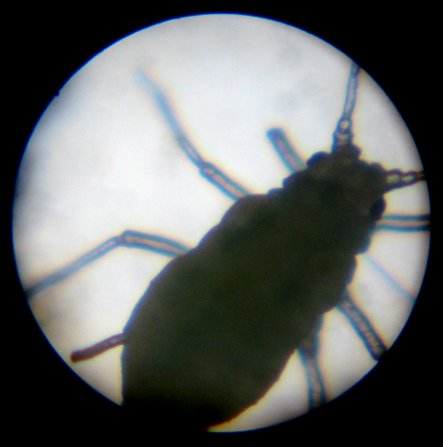A letter from one of our readers:
"I
just read the article on growing your own food. I have tried this but have had great difficulty with insect damage. I
have tried some of the "natural" insecticides but they don't seem to
work very well. Two of the major problems I have are cutworms that snip off
seedlings before they can get started, and a plague of small white snails which
invade later in summer and devastate everything. I cannot use chemical
pesticides due to my wife's chemical sensitivities (nor would I want to pollute
my garden with them). Any
suggestions?"
There are few things more frustrating than tending vegetable
plants only to see them mowed down overnight by a marauding band of insects.
Lets take a look a few different ways to approach this problem.
First the unacceptable option: a bottle of chemicals from a
garden center, a solution ruled out not just by your wife's sensitivities but
by all of our sensitivities. You
quite correctly state that you would not want to pollute your garden with them.
If a chemical is poisonous for an insect, there's a good chance it's poisonous
for us humans as well. Sadly, not only do many home gardeners take the chemical
route, but so does our industrial agricultural establishment.
But our main objection to chemical controls is a practical
one-in the long term they don't work. When you blanket your plants with
pesticides you're also playing a losing game with evolutionary biology. Some of
the insects you hit with the pesticides will survive, living to breed pesticide
resistant offspring, necessitating larger quantities of chemicals, or giving
the pesticide producers a chance to market yet more exotic chemicals.
Furthermore, many pesticides indiscriminately kill beneficial insects such as
bees, ladybugs and lacewings along with the pests you're trying to eliminate.
Next season the destructive insects will return, but the odds are the predatory
and beneficial insects, which like all predators exist in far fewer numbers,
may not return at all. Result: even more aphids, grasshoppers or whatever else
has descended on your garden. And those natural insecticides you mentioned? As
you say, most don't work very well, and even if they did you'd still have the
twin problems of indiscriminate killing of beneficials and breeding generations
of super pests.
One benefit of small scale agriculture is that it allows you
to approach a problem manually and specifically, rather than with large
chemical gestures. Both the cutworms and snails plaguing your garden can be
hunted at night with a flashlight.
You can also construct physical barriers. In the case of
cutworms, a bottomless paper cup buried to encircle the plant, with the cup
extending two inches below and above the ground will prevent access. Snails can
be deterred with copper stripping or crushed eggshells placed around the base
of plants. The problem with these manual techniques is that you must be
persistent. For a lot of folks the thought of hunting down critters with a
flashlight after a long hard day at work just won't fly.
It might be best to reserve these direct measures for
emergencies, and in the meantime cultivate a more philosophical approach summed
up by author and naturalist Bill Mollison's suggestion that the reason you have
snails is because you don't have enough ducks. Now, we're not suggesting that
every vegetable gardener run out and get ducks, rather that our job as
gardeners and farmers is to restore nature's balance, the equilibrium praised
in the Sermon on the Mount: "Consider the lilies of the field, how they grow;
they neither toil nor spin.". Disaster, not to mention a hell of a lot of toil
and effort, happens when we attempt to dominate nature, rather than simply
working with her. Of course, you can't
eat Jesus' lilies. So how do we bring that equilibrium, that self-sustaining
and symbiotic relationship of insects and plants into our own food gardens? One
word: Permaculture.
The more we've toiled in our own small garden the more we've
come to respect Permaculture, a way of thinking developed by Australians Bill
Mollison and David Holmgren. Mollison and Holmgren penned some hefty tomes
that, while very worthwhile reads, can seem overwhelming at first. But the
principles are very simple and easy to emulate. Frankly, our best experiments
in Permaculture have been completely unintentional. Our get tough policy in the
garden-if a plant doesn't work out we try something else-has led over time to a
healthy, insect resistant garden. Often the best solution is finding edible
species appropriate for our climate. For instance, it's not really cold enough
to grow good apples here in Los Angeles,
so we grow pomegranates instead. We don't mourn the apples, or try to grow
fussy warm-weather hybrids, we embrace the pomegranates.
When it comes to pests, Permaculture is at odds with the
West's reductionist approach to problems. Rather than see things in
isolation-bad snails and bad cutworms-Permaculture deals with whole systems.
Permaculture's solutions are systematic and holistic, seeing plants not in
isolation but in how they work with each other, with animals and insects, and
with us humans. Permaculture emulates nature's beneficial feedback loops, e.g.
some plants provide mulch and nitrogen to other plants, which in turn offer
shelter to beneficial birds and insects and on and on.
But the lofty ideals of Permaculture can seem unsatisfactory
when faced with the destruction of a beloved tomato plant. So what does a
Permacultural approach look like, practically, for our reader's cutworm and
snail problem? Here's some simple suggestions:
1. Install a birdbath. Our birdbath proved popular with many
more birds than we expected including our favorite, the Black Phoebe (Sayornis
nigricans), a dedicated hunter of the little butterflies that produce cabbage
worms. Adding trees and bushes give birds safe places to perch and will
increase their visits. True, birds will sometimes peck out seeds you've
planted, but this is easily dealt with by covering new plantings with aviary
netting temporarily.
2. Encourage biodiversity. In other words, plant lots of
different kinds of things. Rather than putting our vegetable plants all
together in rows in one place, we started tucking them in around the yard,
almost at random. In our backyard now you might find a tomato vine next to some
fennel, right by an avocado tree, adjacent to a ornamental flowering native
with a few random beans and some herbs thrown in for good measure. Keeping
tender vegetable plants more isolated makes it harder for pests to find them to
seek and destroy.
It is especially important to include flowing plants that
attract bees, beneficial insects and birds. We also encourage you to let some
of your food plants go to flower. These flowers, while not showy, are manna for
beneficial insects. Some favorite bug flowers around our place are fennel,
parsley and dill and arugala.
3. Healthy Soil. Healthy plants, well adapted to their
surroundings posses greater disease and pest resistance. And the key to a
thriving landscape is encapsulated in the old adage that you grow soil, not
plants. Our favorite method for amending soil is sheet mulching described in
depth here (http://www.agroforestry.net/pubs/Sheet_Mulching.html).
We don't believe in tilling soil, but rather working as nature does by adding
lots of organic matter to the surface and letting microbes, worms and fungi do
the heavy lifting.
4.
Water. Neither too much nor too little. Start off by favoring plants native to
the climate you live in that don't need much additional irrigation, if any at
all. A Permacultural approach to water might include matching the outputs of
downspouts and greywater sources such as your shower and laundry machine to
water loving plants. For plants such as vegetables that need water in our dry
Mediterranean climate we like to use drip systems on a timer. The timer is a
good tool for fighting the forgetfulness
factor that can lead to a wilting plant and compromised pest resistance.
5.
And don't forget to mulch. Mulch holds in moisture, stabilizes
temperatures, builds soil and provides
important habitat for beneficial insects. It is one of the most best things you
can do for your garden.
Permaculture is an eminently practical vision, the wisdom of
which extends far beyond gardening. Permaculture can solve this reader's
cutworm and snail problems, but it can also solve many of our culture's most
intransigent dilemmas. Holistic
approaches, while requiring infinitely more patience, lead to dynamic solutions.
Reductionism ends up treating symptoms rather than the causes, as the French
say, "like putting a band-aid on a wooden leg."
An eco-system, a city, a community, is a totality, not a set
of isolated plants, insects, animals, buildings or roads. Likewise, in our own
gardens our job is to never see plants, bugs or problems in separation, but to
step back, observe the garden as one breathing entity, and facilitate nature's
glorious equilibrium.
Homegrown Evolution's Kelly and Erik are the authors of the
handbook The Urban Homestead available now through Process Media
and wherever books are sold.













